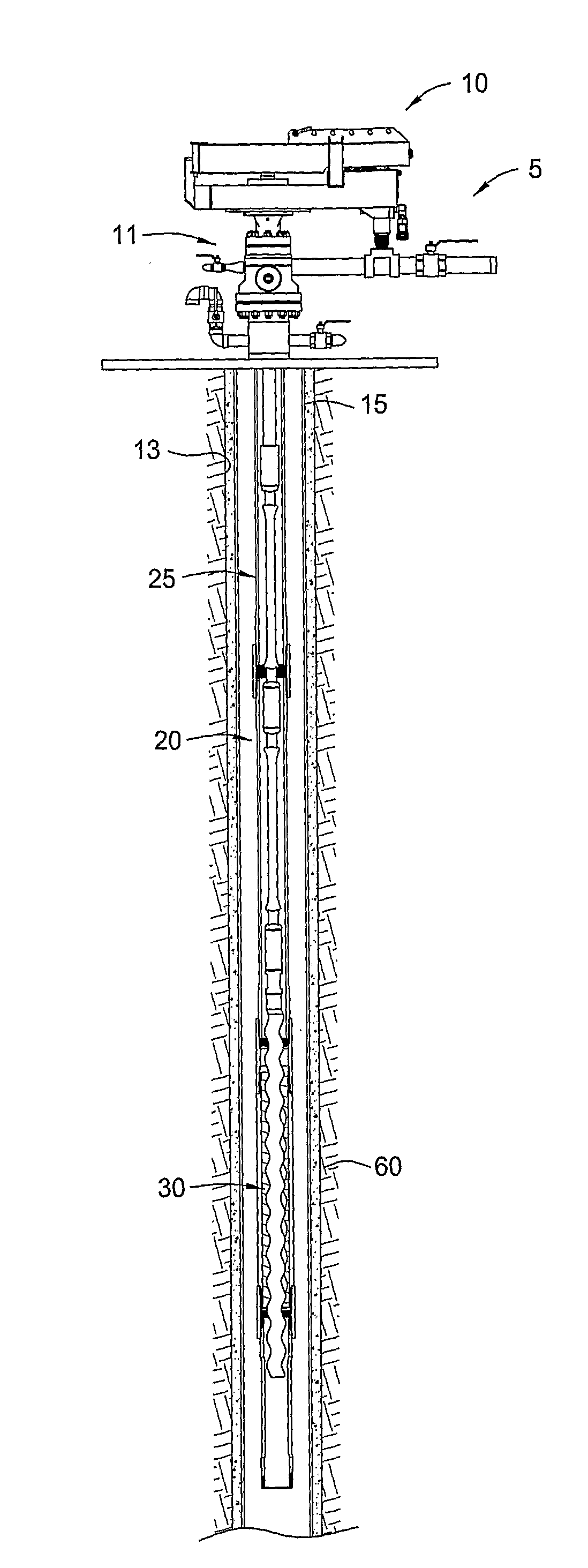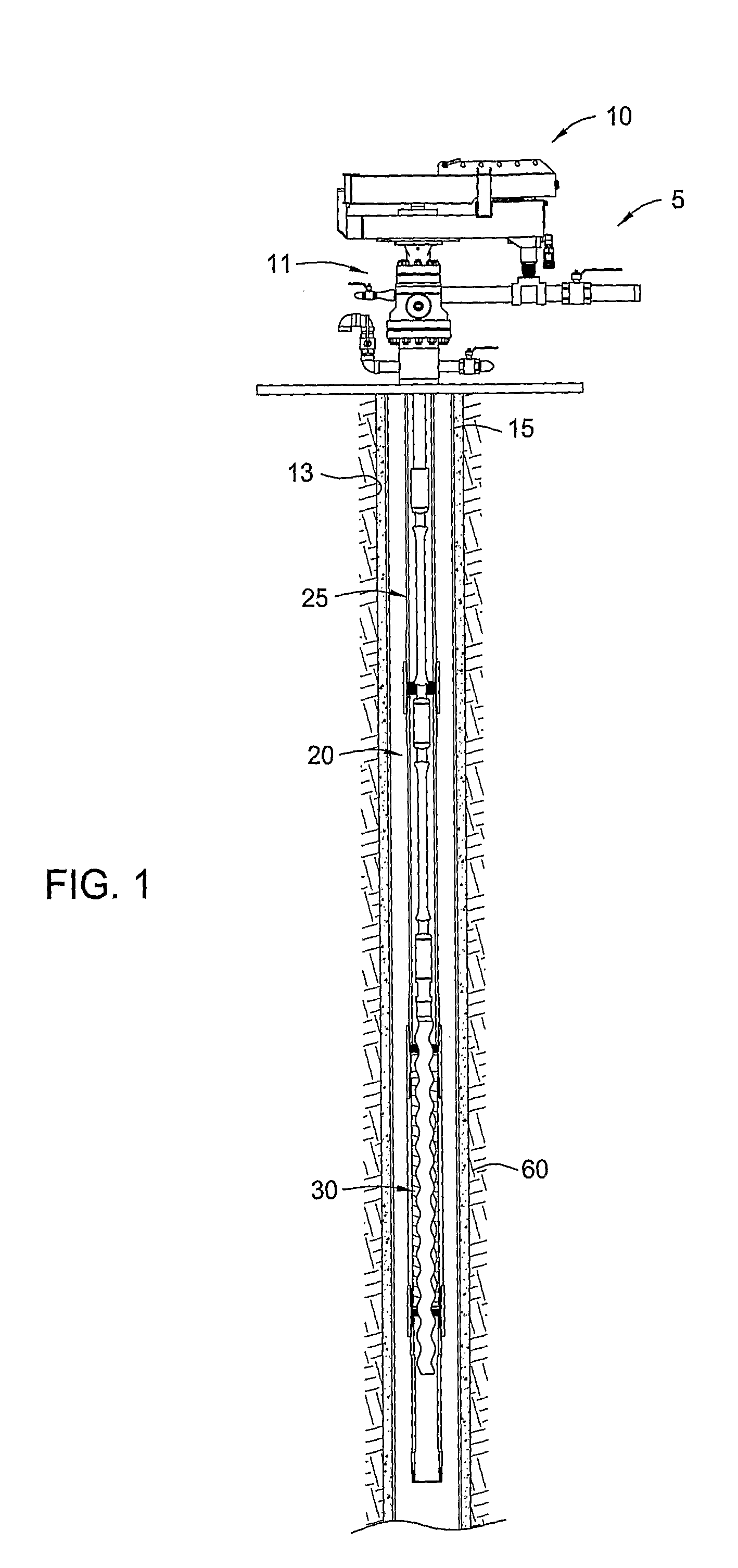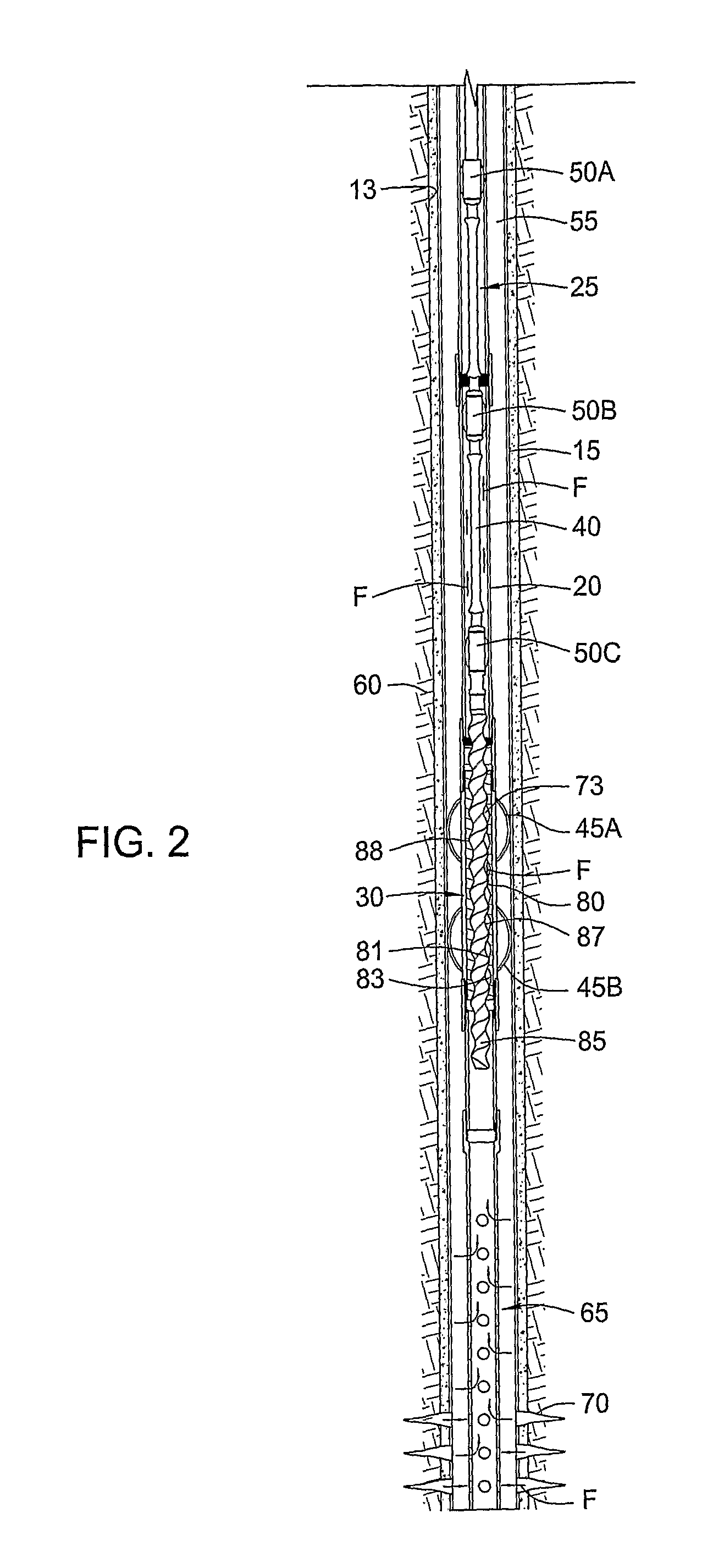Well treatment using a progressive cavity pump
a technology of progressive cavity and well treatment, which is applied in the direction of positive displacement liquid engine, borehole/well accessories, liquid fuel engine, etc., can solve the problems of high cost of truck-mounted pumping units to treat formation, significant fees for renting pumping units, and high cost of truck-mounted pumping units
- Summary
- Abstract
- Description
- Claims
- Application Information
AI Technical Summary
Benefits of technology
Problems solved by technology
Method used
Image
Examples
Embodiment Construction
[0024]FIG. 1 shows a PCP lift system, which includes a PCP 30 powered by one or more drive mechanisms 10. A valve system 5 of the drive mechanism 10 regulates fluid flow through the PCP 30. The drive mechanism 10 generally includes a motor, such as a hydraulic motor, for providing torque and rotation to a drive string or rod string 25 (also termed “sucker rod”) disposed within the drive mechanism 10. The drive string 25 operatively connects the PCP 30 to the motor of the drive mechanism 10.
[0025]A wellbore 13 extends into an earth formation 60 below the drive mechanism 10. Casing 15 is preferably set within the wellbore 13 using cement or some other physically alterable bonding material. (In the alternative, the wellbore 13 may be only partially cased or may be an open hole wellbore.) Preferably, the casing 15 extends from a wellhead 11, which provides a sealed environment for the PCP 30. The wellhead 11 comprises high and low pressure rams to manage the pressure of the fluid within...
PUM
 Login to View More
Login to View More Abstract
Description
Claims
Application Information
 Login to View More
Login to View More - R&D
- Intellectual Property
- Life Sciences
- Materials
- Tech Scout
- Unparalleled Data Quality
- Higher Quality Content
- 60% Fewer Hallucinations
Browse by: Latest US Patents, China's latest patents, Technical Efficacy Thesaurus, Application Domain, Technology Topic, Popular Technical Reports.
© 2025 PatSnap. All rights reserved.Legal|Privacy policy|Modern Slavery Act Transparency Statement|Sitemap|About US| Contact US: help@patsnap.com



